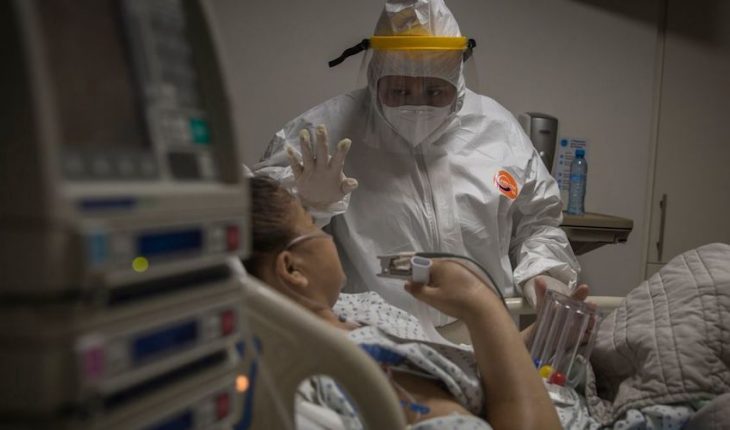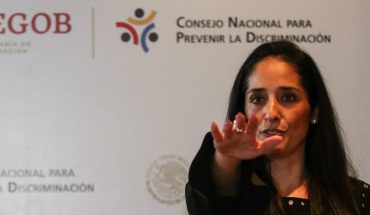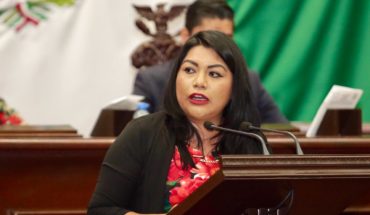It’s midnight, but Arely has a hard time sleeping. He feels his muscles deteriorated and fragile hurt. That his head is going to explode because of the migraine. And let the skin, with the simple rubbing of the sheets, burn it.
He then makes the amago to get up, but a cramp tips him a whip in his legs and arms, and the grave back in bed.
Read more Consequences of covid-19: ‘My fatigue was nothing I had experienced before’
His heartbeat goes off and he sweats cold. Tachycardia is the stress of a fatigued mind, a sore and weakened body, and a saturated immune system, under threat for nine months.
Arely Melo tested positive for COVID on March 27, five days after returning from a trip through Africa. The virus has long since left his body, but it continues to wreak havoc.
“When they tell you you no longer have COVID, you sing victory. You say: uuuf, I’ve already delivered it. I’m going to get my life back,” Arely says.
But that life hasn’t come back. And he doesn’t know if he’s coming back. He’s lost 12 kilos of muscle mass and can’t exercise, one of his passions. Nor can you return to work normally for constant migraines and chronic tiredness. And crossing the door of his house has become a pain in the face of anxiety crises in the face of fear of re-infecting.
“COVID is a good bitch disease,” Arely sums up with a resigned, exhausted laugh. “It can attack you on many sides and can leave you with many sequels until months after you’ve tested negative. That’s why I can’t think of another word to define it: it’s a very fucked-up disease.”
Multiple attack
Dr. Juan Luis Mosqueda, general manager of the Hospital de Alta Especialidad del Bajío, IMSS, does not express it as graphically as Arely. But during the interview with Political Animal comes to raise the same thing: that COVID has no word. Which is highly unpredictable. And that there’s still a long way to go to understand it.
“We thought it only affected the airways and lungs. But we are already seeing that no, which is also affecting other organs such as the heart, brain, or kidneys,” says the doctor, who highlights another fact that Arely has already explained: that for thousands of people, COVID does not end when the PCR test gives the negative craving.
Statistics show this: of 291,000 confirmed COVID cases attended by the Mexican Social Security Institute (IMSS) until last October 28, 44,000 patients were left with some sequelae. And of these, about 2,200 people had severe complications and needed rehabilitation therapies.
These figures are given in interview by another doctor: José Delgado García, head of the Rehabilitation Units Division of IMSS.
Delgado nuances two points: the first, that this data is “generic”, since there is still no accurate information. And the second: that most cases of COVID that served in the IMSS, between 75 and 80%, had no serious aftermath.
But then he admits that the numbers also reflect that cases like Arely’s are not as isolated, and that thousands of people who oversperformed the virus continue to struggle with its mid- and long-term aftermath, and that even some of those people will have to do so for life.
Among the most common coVID aftermath, list the doctor, are those related to loss of breathing capacity, in mild and moderate cases, up to pulmonary fibrosis in severe cases, where the damage is irreversible. In addition, problems with passing food or beverages, and in the voice, may occur in some patients who were intubated.
Although the list of sequels is expanding as the pandemic progresses.
“The patient may also have heart involvements, such as arrhythmias, which are secondary injuries from severe lung damage,” says José Delgado.
“And when there are heart involvements,” he warns, “there are affectations on virtually the whole organism.”
In cases where the patient was admitted to intensive care for 14 days or more, thromboembolism may also occur which, depending on where the blood clot forms, may be of less or greater severity: the most at risk are in the brain or heart.
Other sequelae may be neuropathies – intense and constant headaches -, significant muscle losses, to the point of affecting muscle function, prolonged loss of smell and taste – “there are patients who do not recover them,” says Dr José Delgado.
There are cases where COVID generates “significant cognitive impairment”, with memory loss and deficiency in attention and mental processing speed, by inflammation of the brain.
“My hell is not over”
Dafnet Pedraza, 29, laughs resignedly across the phone. He says almost every sequel on Dr. Delgado’s list is familiar to him. That he’s had them, or that he’s suffering from them.
Dafnet got COVID on May 17, after her mom was “patient zero” at home. Then it was his father’s turn. But both had only mild symptoms.
She was the one who played hardest: “I woke up one day with a headache I couldn’t stand. Remember that very strong scene of Game of Thrones where one guy smashes another’s skull with his hands? Well, that’s how I felt.”
Then back pains began at the height of the lungs, shortness of breath, electric shocks, loss of taste and smell, and extreme tiredness.
Dafnet lasted more than a month and a half with the virus. And, when it finally came back negative, the truce was very short, just three days. From then on, headaches and fatigue returned, and the worst: “unimaginable aftermath” appeared.
The most severe, an inflammation pericarditis of the heart that made her feel exhausted 24 hours – “I felt like I had an elephant sitting in my chest” – and that her limbs fall asleep.
When doctors from private institutions with which pericarditis was treated managed to control pericarditis, neuropathies began to intensify: migraines, burning in the legs and arms, and in the face; dizziness and momentary memory loss.
Dafnet also began to have gastrointestinal problems with episodes of diarrhea, alternating with periods of constipation – it has been lost 25 kilos. And last September, “more incredibly weird things” started coming out.
“For example, I hardly eat meat, but it started to come out that I had uric acid and super high cholesterol. Even one day the doctor asked me if I took any food supplement with chlorine, because I also had it too high. Something weird,” he says.
The virus has also changed your menstrual period, to the point that you now have two in the same month.
“Half a year later, my hell isn’t over yet,” sums up the 29-year-old woman, who was also left with post-traumatic stress. “I’m hardly out on the street anymore, because I’m a horrible fear of getting infected again.”
Fear after COVID
Romeo Tello, a 61-year-old master of literature, says he saw death closely.
He and his wife Juliet were infected in early May. She had mild symptoms. But he started with a slight sore throat and ended with a crushing asphyxiation.
He called 911 and was asked to take the COVID test. But to do it was to wait five days for the results. His daughter, Irene Tello, took him for a chest scan. In 20 minutes he was given the results: the virus was already causing damage to the respiratory system.
He was admitted to an emergency hospital in Cuernavaca, Morelos.
For two weeks, Romeo wrestled with the only company of the monotonous sound of the machines to which he was connected. “To be entered into a hospital with a lot of difficulty breathing and after having read so many things in the media, so many deaths, it’s terrifying.”
Now the virus is no longer in his system, although it left as a scar the stress after being so close to the void: “It has changed my outlook on life, of course. The idea of death is already something much more familiar, something closer. The feeling of fragility was very strong.”
His daughter Irene worries that his father, “now pans easily.”
“You measure the pressure, the temperature every time, and as soon as you lower your oxygen and you get very nervous. Not in vain did he see death head-on… He had it too close.”
What we do at Animal Politics requires professional journalists, teamwork, dialogue with readers and something very important: independence. You can help us keep going. Be part of the team.
Subscribe to Political Animal, receive benefits and support free journalism.
#YoSoyAnimalEl ‘My nightmare is not over; now I fight the aftermath’: life after having COVID first appeared in Political Animal.





